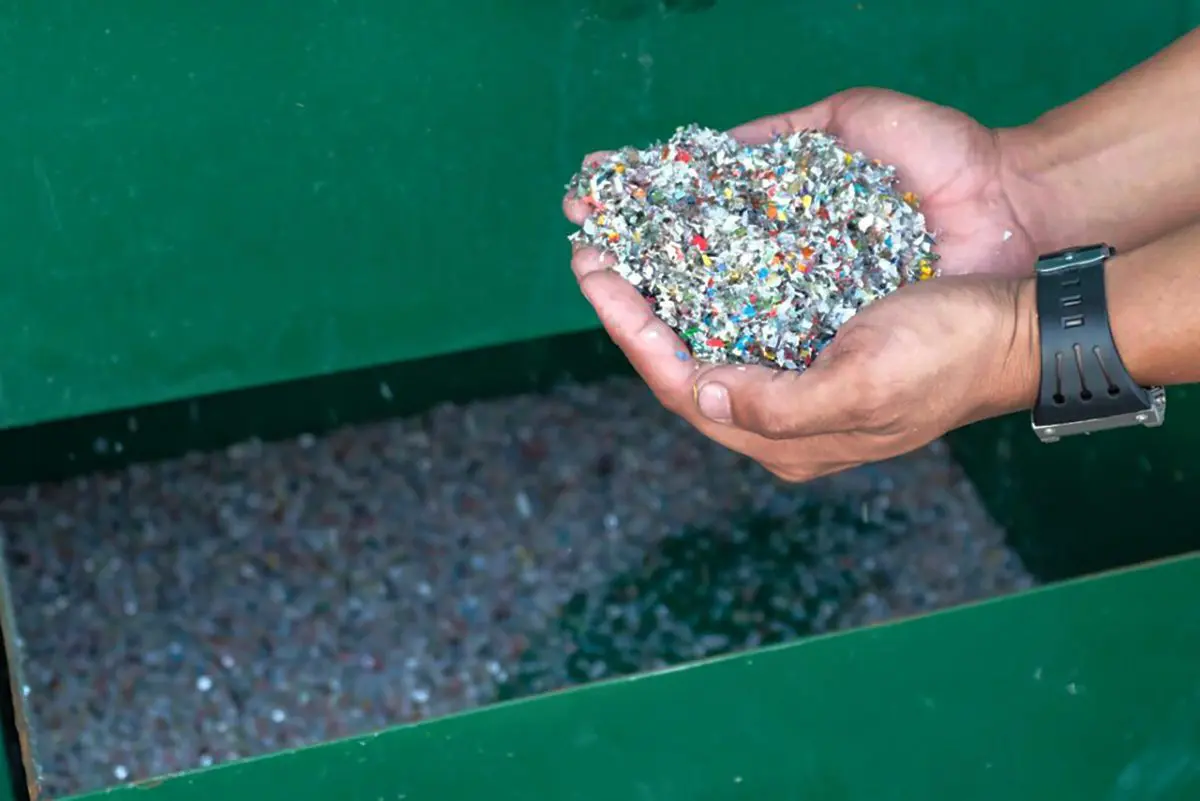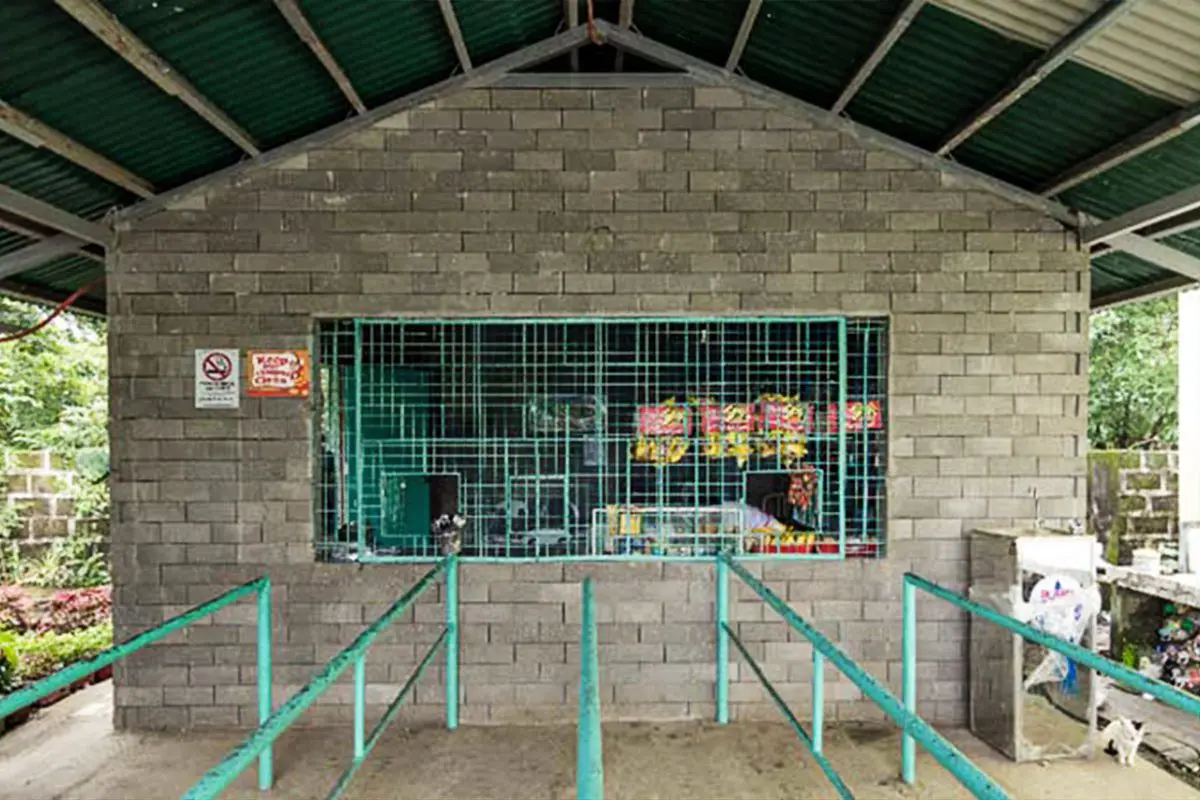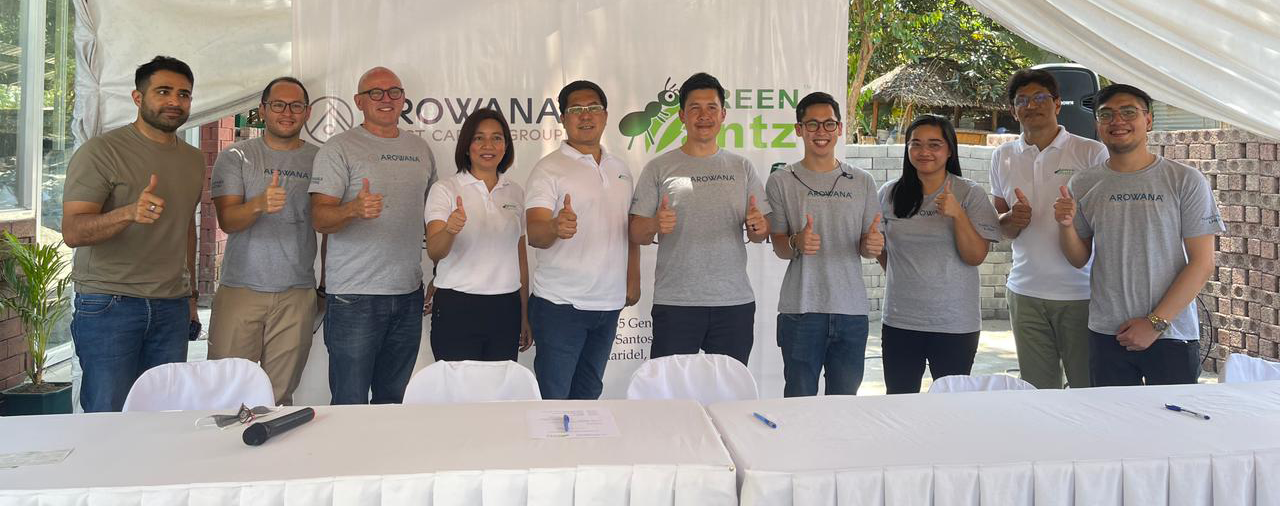Divestiture of two non-core, legacy business units, J.A. Martin Electrical contracting business and NDT business
Fast-growing J.A. Martin Solar business unit to be retained and integrated with Aevitas Kenshaw
Caret Solar also expected to be divested via a trade sale, spin off or carve out as part of strategic reorganization plan
Proceeds to be primarily reinvested in high-growth electric vehicle and sustainable energy solutions businesses
LONDON, June 29, 2022 (GLOBE NEWSWIRE) -- VivoPower International PLC (NASDAQ: VVPR, the “Company”) is pleased to announce the sale of two non-core business units in Australia, J.A. Martin Electrical (“JAM Electrical”) and NDT Services (“NDT”), to ARA Group Limited (“ARA”), a leading diversified industrial services group based in Australia. This is in line with VivoPower’s strategy to focus on its core electric vehicle, renewable critical power, and sustainable energy solutions businesses.
VivoPower will receive upfront consideration as well as an earnout based on FY2023 EBITDA results for the businesses (including the value of synergies) which could total up to A$10m (subject to actual FY2023 EBITDA results). VivoPower was advised on this transaction by STS Capital Partners in Singapore. The sale is expected to be completed and settled on July 1, 2022.
VivoPower is retaining its growing J.A. Martin’s Solar (“JAM Solar”) business, which will become a new division of its existing Australian business arm, Kenshaw (part of the wholly-owned Aevitas group in Australia).
Kevin Chin, VivoPower’s Executive Chairman and Chief Executive Officer, said: “We are pleased to have taken this step to align our core business for the next decade of growth. With the JAM Solar business revenue delivering 62% compound annual growth rate (CAGR) since FY2019, the sale of the non-solar business of JAM Electrical and NDT represents an opportunity for the Company to consolidate its strategic focus while divesting non-core service offerings. Key capabilities will however be retained (including for the recently awarded A$11.7m contract for Edenvale Solar Farm).
“As part of our long-term strategy to focus on our core business units, including Tembo electric vehicles, Aevitas renewable critical power, and Vivo sustainable energy solutions, we expect to also be divesting our broader Caret Solar business unit through a trade sale, carve out or spin off. This sale could be in tranches or as a whole, given interest from different groups including crypto-mining hosting companies and renewable power developers.
“Proceeds from the sale of the above non-core business units will be re-invested primarily in our fast-growing electric vehicle and sustainable energy solutions businesses.”
About VivoPower
VivoPower is a sustainable energy solutions company focused on battery storage, electric solutions for customized and ruggedized fleet applications, solar and critical power technology, and services. The Company's core purpose is to provide its customers with turnkey decarbonization solutions that enable them to move toward net-zero carbon status. VivoPower is a certified B Corporation with operations in Australia, Canada, the Netherlands, the United Kingdom, the United States, and the United Arab Emirates.
Forward-Looking Statements
This communication includes certain statements that may constitute “forward-looking statements” for purposes of the U.S. federal securities laws. Forward-looking statements include, but are not limited to, statements that refer to projections, forecasts or other characterizations of future events or circumstances, including any underlying assumptions. The words “anticipate,” “believe,” “continue,” “could,” “estimate,” “expect,” “intends,” “may,” “might,” “plan,” “possible,” “potential,” “predict,” “project,” “should,” “would” and similar expressions may identify forward-looking statements, but the absence of these words does not mean that a statement is not forward-looking. Forward-looking statements may include, for example, statements about the achievement of performance hurdles, or the benefits of the events or transactions described in this communication and the expected returns therefrom. These statements are based on VivoPower’s management’s current expectations or beliefs and are subject to risk, uncertainty, and changes in circumstances. Actual results may vary materially from those expressed or implied by the statements herein due to changes in economic, business, competitive, and/or regulatory factors, and other risks and uncertainties affecting the operation of VivoPower’s business. These risks, uncertainties, and contingencies include changes in business conditions, fluctuations in customer demand, changes in accounting interpretations, management of rapid growth, the intensity of competition from other providers of products and services, changes in general economic conditions, geopolitical events, and regulatory changes and other factors set forth in VivoPower’s filings with the United States Securities and Exchange Commission. The information set forth herein should be read in light of such risks. VivoPower is under no obligation to and expressly disclaims any obligation to, update or alter its forward-looking statements whether as a result of new information, future events, changes in assumptions or otherwise.
Contact
Shareholder Enquiries
Media Enquiries
Sophie Morello / Jessica Hodson Walker / Richard Bicknell
Arowana celebrated its 15th year Anniversary on 15 June with members of the Arowana team in Brisbane, Manila, and London enjoying a meal together and capping off the celebrations with cake.

Our resource-intensive world centers on the linear economic model of ‘take, make, use and waste’ and the plastic industry epitomizes this convention, extracting resources from the earth to make plastic packaging that is most likely used once, then thrown away. Indeed, over the last decade plastic has increasingly become a pariah, and a tangible and ever-present reminder of our over-consumption and wastefulness. Images of plastic waste strangling ocean marine life and evidence of it entering the food chain and our bodies has rightfully caused alarm and created a sense of urgency to deal with it.
According to a 2016 study by McKinsey, the World Economic Forum, and the Ellen MacArthur Foundation, of the annual 78 million tonnes of plastic packaging produced, 40% ended up in landfill, 32% leaked into the environment (including an estimated 8 million tonnes into oceans) and 14% was incinerated. A meager 14% was collected for recycling.
So, clearly, the linear economic model has borne a torrent of plastic waste that is contributing to environmental degradation globally. However, the solution is not ending the use of plastics, given the multitude of beneficial use cases of plastics. The solution is the reconfiguration of the plastic industry from a linear economy to a circular economy.

Material recovery, or the process of obtaining solid waste from one industry for its potential to be recycled and repurposed in another, is fundamental to resource efficiency in the circular economy. According to the Ellen McArthur Foundation, a circular economy model can be created through 3 key actions: (i) elimination of unnecessary plastics; (ii) innovation to ensure plastics are re-usable, recyclable or compostable; and (iii) circulation of plastic items to keep them in the economy and out of the environment.
"The solution is the reconfiguration of the plastic industry from a linear economy to a circular economy."
But crucially, there is much more to the circular economy than the obvious environmental benefits. Where the linear economic model contributes to societal inequality through supply chain practices designed to suppress costs, a circular economy can foster inclusive growth in developing countries, enabling positive social and environmental outcomes.
Indeed, social and environmental benefit can and should go hand-in-hand. Building inclusivity, such as access to jobs and fair pay, into any circular initiative, is the only way to ensure it is truly sustainable and will be a long-term success. Without local buy-in and providing livelihood opportunities, the whole system will fail to achieve its key aim of creating a vibrant green economy.
One organization, Green Antz, demonstrates how plastic waste can be addressed through a circular system, while supporting inclusive growth. It collects, recycles, and reuses plastic waste from commercial establishments and communities in the Philippines and converts it into value-added construction materials such as bricks and pavers. And through a proprietary process, these bricks and pavers turn out stronger than their conventional versions.
The plastic waste problem is particularly pronounced across the ASEAN region, where the Philippines is the region’s worst polluter, accounting for 36% of the 8 mega tonnes of global plastic waste that ended up in oceans in 2021. It is one of the world’s worst plastic polluters and innovative solutions, like that offered by Green Antz, are much needed.

To ensure it is having a positive social impact as well, Green Antz actively engages with marginalised communities that are incentivized to collect and repurpose plastic waste, earning a sustainable living from doing so. Through a “Shared Value” approach, they engage with community partners, conglomerates, and multinational companies for the collection of plastic waste whilst centralizing the production of construction materials within plastic collection centers called EcoHubs.
To date, Green Antz has established a total of 36 EcoHubs and over 100 community and corporate partnerships in the Philippines. As a result, the company has diverted 284 tonnes of plastics from landfills, created more than 150 jobs, and improved the livelihood of local communities.
It is proof that the circular economy has the scope to achieve so much more than environmental impact. With its multi-dimensional business model, Green Antz contributed towards a number of UN Sustainable Development Goals (SDGs) including SDG 1 (No Poverty), SDG 8 (Decent Work and Economic Growth), SDG 12 (Responsible Consumption and Production) and SDG 14 (Life Below Water).

It is also very well-positioned to scale up its impact across the ASEAN region and beyond. Through its real-world knowledge of utilizing the circular economic model, Green Antz provides a blueprint for businesses that aim to generate multi-dimensional value, aligning profit with empowering people and protecting the planet. Not only does it play a part in helping communities in Southeast Asia become more resource-efficient and address the issue of plastic pollution, it also generates livelihood opportunities and encourages and mobilizes local partners in underdeveloped communities to have a stake in a greener economy.
This is just one example of how impactful the circular economy model can be. While the obvious environmental crises and growing population pressures on the world’s natural resources mean a move towards a circular system is a necessity, we should grasp the immense opportunities it offers to improve equality and distribution of wealth, only then will we achieve a truly sustainable economy.
Contract represents the largest ever solar contract for electrical works won by VivoPower
The 240MWdc solar contract for electrical works is worth A$11.7m
The Edenvale Solar Farm in Queensland, Australia will generate 425,000MWh of clean energy per year and avoid the emission of 300,000 tonnes of carbon dioxide
LONDON, June 13, 2022 (GLOBE NEWSWIRE) -- VivoPower International PLC (NASDAQ: VVPR, the “Company”) is pleased to announce that its wholly-owned subsidiary in Australia, J.A. Martin Electrical Pty Limited (“J.A. Martin”), has been awarded an A$11.7m contract to complete all electrical works for the 204MWdc Edenvale Solar Farm in Queensland, Australia.
Construction has already commenced with the project to be the fifth utility scale Australian solar farm completed by VivoPower’s Aevitas business unit in Australia, bringing the completed and contracted solar farms to over 650MWdc. Once energised, the Edenvale Solar Farm will generate approximately 425,000MWh of clean energy per year and avoid the emission of 300,000 tonnes of carbon dioxide into the atmosphere, equivalent to the amount generated by approximately 83,000 internal combustion engine vehicles.
Kevin Chin, VivoPower’s Executive Chairman and Chief Executive Officer, said: “Since establishing our solar solutions business in Australia, we have seen revenue grow at a 62% compound annual growth rate (CAGR) since FY2019 (based on actual and forecast contracted revenue through to June 30, 2022). In addition, over the past quarter, we have seen a step change increase in the pipeline of additional solar project opportunities across the Australian market and we are very well positioned to win and deliver on further contracts.”
About VivoPower
VivoPower is a sustainable energy solutions company focused on battery storage, electric solutions for customised and ruggedised fleet applications, solar and critical power technology, and services. The Company's core purpose is to provide its customers with turnkey decarbonisation solutions that enable them to move toward net zero carbon status. VivoPower is a certified B Corporation with operations in Australia, Canada, the Netherlands, the United Kingdom, the United States, and the United Arab Emirates.
Forward-Looking Statements
This communication includes certain statements that may constitute “forward-looking statements” for purposes of the U.S. federal securities laws. Forward-looking statements include, but are not limited to, statements that refer to projections, forecasts or other characterizations of future events or circumstances, including any underlying assumptions. The words “anticipate,” “believe,” “continue,” “could,” “estimate,” “expect,” “intends,” “may,” “might,” “plan,” “possible,” “potential,” “predict,” “project,” “should,” “would” and similar expressions may identify forward-looking statements, but the absence of these words does not mean that a statement is not forward-looking. Forward-looking statements may include, for example, statements about the achievement of performance hurdles, or the benefits of the events or transactions described in this communication and the expected returns therefrom. These statements are based on VivoPower’s management’s current expectations or beliefs and are subject to risk, uncertainty, and changes in circumstances. Actual results may vary materially from those expressed or implied by the statements herein due to changes in economic, business, competitive and/or regulatory factors, and other risks and uncertainties affecting the operation of VivoPower’s business. These risks, uncertainties and contingencies include changes in business conditions, fluctuations in customer demand, changes in accounting interpretations, management of rapid growth, intensity of competition from other providers of products and services, changes in general economic conditions, geopolitical events and regulatory changes, and other factors set forth in VivoPower’s filings with the United States Securities and Exchange Commission. The information set forth herein should be read in light of such risks. VivoPower is under no obligation to, and expressly disclaims any obligation to, update or alter its forward-looking statements whether as a result of new information, future events, changes in assumptions or otherwise.
Toyota Australia is a wholly-owned subsidiary of Toyota Motor Corporation,
the world’s largest car manufacturer
VivoPower has now established a Tembo Australia subsidiary and dedicated Tembo resources
to this Toyota Australia programme
VivoPower International is pleased to announce that it has executed a Design Services Agreement (DSA) with Toyota Motor Corporation Australia Limited (TMCA) for its wholly-owned subsidiary, Tembo e-LV to be commercially engaged in relation to the next stage of design of electrification solutions for the Toyota LandCruiser 70 for off-road applications in Australia.
The DSA reflects the commercial next step in Tembo’s collaboration programme with TMCA, which was initially announced as a binding letter of intent in June 2021. VivoPower has established a Tembo subsidiary in Australia and will commit dedicated Tembo resources to this important programme.
VivoPower’s Executive Chairman and CEO, Kevin Chin said: “We are honoured to have entered into this commercial agreement with TMCA and are fully committed to working closely with the TMCA team to deliver an electrified LandCruiser 70, which is fit for purpose and safe for corporate fleets, especially for off-road use cases such as mining. In this regard, we have now dedicated a team within Tembo that is solely focused on this important TMCA project. We will also be sub-contracting our partner in Australia, GB Auto, given their dedicated mining sector experience.”
To read our full press release, and to keep up with all of VivoPower’s releases, visit the company's Press Releases page.
About VivoPower
VivoPower is a sustainable energy solutions company focused on electrification solutions for customized and ruggedized fleet applications, and solar and critical power technology and services. The Company’s core purpose is to provide its customers with turnkey decarbonization solutions that enable them to move toward net-zero carbon status. VivoPower is a certified B Corporation with operations in Australia, Canada, the Netherlands, the United Kingdom, the United States, and the United Arab Emirates.
About Toyota Motor Corporation Australia
Toyota Motor Corporation Australia Limited is a wholly-owned subsidiary of Toyota Motor Corporation, the world’s largest car manufacturer.
All trademarks referenced herein are the property of their respective owners.
Contact
Investor Relations
Media Enquiries
Sophie Morello / Jessica Hodson Walker / Richard Bicknell
VivoPower International announced today that A.G.P./Alliance Global Partners has initiated research coverage on the Company with an initial “Buy” recommendation and price target of $5.00 per share.
The initiation report, written by Jeffrey Campbell, Managing Director, Equity Research, Alternative Energy, Energy, and Sustainability Research, A.G.P., was published on March 31, 2022, and can be obtained by contacting Jonathan Kurtin, Head of Equity Sales, A.G.P., at [email protected].
The Company was not involved in the preparation of the research report and therefore expressly does not adopt or endorse any such advice or report. Please note that any opinions, estimates, or forecasts regarding the performance of the Company and its management made by A.G.P./Alliance Global Partners are theirs alone and do not represent the opinions, estimates, or forecasts of the Company or its management.
To read our full press release, and to keep up with all of VivoPower’s releases, visit our Press Releases page.
About VivoPower
VivoPower is a sustainable energy solutions company focused on battery storage, electric solutions for customized and VivoPower is a sustainable energy solutions company focussed on battery storage, electric solutions for customised and ruggedised fleet applications, solar and critical power technology, and services. The Company’s core purpose is to provide its customers with turnkey decarbonisation solutions that enable them to move toward net zero carbon status. VivoPower is a certified B Corporation with operations in Australia, Canada, the Netherlands, the UK, the US, and the UAE.
About A.G.P./Alliance Global Partners
Headquartered in New York City, A.G.P./Alliance Global Partners is an institutional investment banking firm with a strong sales/trading presence, in addition to its research and investment banking arms.
VivoPower International PLC announced today that the company has been invited to present at the Alliance Global Partners Virtual Energy Conference to be held on Wednesday, April 6, 2022.
The company’s Executive Chairman and Chief Executive Officer, Kevin Chin, and Managing Director and Head of Corporate Development, Matt Davis, will be available for one-on-one investor meetings during the conference.
To learn more or request an invitation to the event, please reach out to [email protected]. For any inquiries, please email [email protected].
About VivoPower
VivoPower is a sustainable energy solutions company focussed on battery storage, electric solutions for customised and ruggedised fleet applications, solar and critical power technology and services. The company's core purpose is to provide its customers with turnkey decarbonisation solutions that enable them to move toward net zero carbon status. VivoPower is a certified B Corporation with operations in Australia, Canada, the Netherlands, the UK, the US, and the UAE.
About Alliance Global Partners
Alliance Global Partners (A.G.P.) is a regional investment and advisory firm that has been a member of FINRA and registered with the SEC since 1980. A.G.P. specializes in wealth management and the middle market institutional arena. A.G.P has full-service capabilities with a global ability to handle domestic as well as international customers. A.G.P. prides itself in providing its clients with boutique-level services along with the confidence of knowing their assets are held at Fidelity Clearing and Custody. Whether a client is looking for wealth management advice, institutional services, or investment banking, A.G.P. has a track record and a proven team to assist. A.G.P. prides itself on long-lasting relationships with its clients, ranging from some of the largest institutions and crossing over to the individual investor.

• Investment set to accelerate growth across the Philippines and ASEAN region
• Green Antz converts plastic waste to sustainable construction materials
• Green Antz to grow recycling to approx. 25 kilo-tonnes of plastic waste a year
• Green Antz workforce of 150 to expand with the investment
SINGAPORE, 28 March 2022 – Arowana Impact Capital (AIC), the impact investing arm of award-winning global B Corp investment group, Arowana, is pleased to announce the completion of a cornerstone investment in Green Antz, producer of eco-friendly construction materials operating in Southeast Asia.
Green Antz converts plastic waste from commercial establishments and communities into value-added construction materials, such as bricks and pavers. Green Antz does this through its network of EcoHubs across the Philippines, which serve as collection sites, production facilities, and recycling education centres.
This strategy enables Green Antz to tackle Asia’s burgeoning plastic waste problem, whilst offering cost-effective and environmentally responsible alternatives to traditional building materials.
Addressing the plastic waste problem in Southeast Asia
Asia generates the highest volume of plastic waste leaking into the world’s oceans. Because of poor waste management, the Philippines is the region’s worst polluter, having produced 36% of the eight mega-tonnes of global plastic waste that ended up in oceans in 2021.
In addition, seven of the ten rivers that expel the most plastic pollutants into these waters are in the Philippines.
With the Arowana Impact Capital investment, Green Antz aims to further reduce plastic waste by 1% by 2025 through a strategy of recycling approximately 25 kilo-tonnes of plastic waste a year. It also intends to embark on a regional expansion strategy to service other markets across ASEAN.
Champion of the circular economy business model
As one of the pioneering practitioners of sustainable business in the Philippines, Green Antz champions the circular economy business model. By using a “Shared Value” approach, they engage with community partners, conglomerates, and multinational companies for the collection of plastic waste whilst centralising the production of construction materials within the EcoHubs.
Green Antz also collaborates with corporate partners to develop and execute waste management solutions, including the implementation of a plastic credit scheme.
To date, Green Antz has established a total of 36 EcoHubs and over 100 community and corporate partnerships in the Philippines. As a result, the company has diverted 284 tonnes of plastics from landfills, created more than 150 jobs, and improved the livelihood of local communities.
AIC chair, Terry Alan Farris, said: “Poor plastic waste management is costing countries like the Philippines north of US$790m a year. Whilst traditional models of reusing plastic offer a good start, communities need to move towards repurposing plastic waste into value-added products, such as the construction materials produced by Green Antz. Not only will communities be able to tackle plastic pollution, but they will also contribute to value creation through game-changing strategies in the circular economy.”
Rommel Benig, CEO, Green Antz, said: “This partnership with Arowana is a significant milestone for the whole Green Antz family as it will propel our organisation to the next level with better capabilities, more innovations, and wider reach.
“We are extremely excited to work with an organisation that is passionate about addressing environmental and social issues. We look forward to working with Arowana as we jointly pursue the circular economy model to create greater and lasting impact.”
Kevin Chin, Founder and Board Member of AIC, said: “We are delighted to be partnering with Green Antz on an important mission to help address the plastic pollution problem in the Philippines and across Southeast Asia. Whilst COVID-19 lockdowns have caused some of the world’s most significant disruption over the last two years across ASEAN, we have been greatly impressed with the resilience of the Green Antz leadership team and its business model. Green Antz has continued to deliver profitable growth and significant impact as measured against the UN Sustainable Development Goals. Importantly for us and our co-investors, this is the type of business model that meets our triple bottom-line criteria of People, Planet, and Profit. We very much look forward to supporting Green Antz on their mission.”
About Green Antz
Green Antz is a pioneering practitioner of the circular economy in the Philippines. Established in 2014, the company collects plastic waste and upcycles them into construction materials and other recycled products. Instead of ending up in landfills and clogging our riverways and coastlines, the repurposed plastic waste generates income for many marginalised communities. Taking the lead from its founder, Green Antz aims to be a force for good by redefining resource use to support sustainable urbanisation.
About Arowana Impact Capital
Launched in 2019, Arowana Impact Capital (AIC) focusses on impact investing in Southeast Asia. AIC’s core purpose is to help build people, build companies, and build value through sustainable investment practices across the ASEAN region.
In focussing on the four key areas of livelihood creation, access to education and healthcare, sustainable urbanisation, and financial inclusion, AIC is helping to contribute towards the successful achievement of the United Nations Sustainable Development Goals (SDGs).
About Arowana
Arowana is a global award-winning B Corp certified group that is focussed on building and scaling up sustainable enterprises. Our investments and operations encompass electric vehicles, renewable energy, vocational and professional education, technology and software, venture capital, and impact asset management. Our long-term mindset and entrepreneurial expertise enable us to provide financial, operational, and technological support to those who aspire to build future-proofed impactful companies.
Media inquiries
Andre Ramirez
Just the word incites a reaction of either eye-rolls or intense enthusiasm. Eye-rolls tend to come from those that believe it is just another form of gambling: “it’s a volatile stock market equivalent, but highly unregulated. Invest at your own peril!” the eye-rollers would say. The enthusiasts are either those that bet big and won during the 2017 or 2021 crypto-craze, convinced that this is the future touting, “high risk, high rewards!”, and then there are those that are excited by the philosophy of decentralized finance and intrigued by the limitless opportunities that are presented by blockchain technology and its many derivatives, from cryptocurrencies, NFTs, and the multitude of these applications in the metaverse.
Click here to download report.
VivoPower is pleased to confirm that it will announce results for the half-year ended December 31, 2021, on Thursday, February 24, 2022, at 16:30 EST / 21:30 GMT.
The Company also confirmed that Kevin Chin, Executive Chairman, and CEO, will host an earnings conference call on Thursday, February 24, 2022, at 17:00 EST / 22:00 GMT.
The dial-in phone number for the live audio call are:
Conference ID: 7649525
Date of call: February 24, 2022
Leader Toll-Free Dial-In Number: (833) 398-0998
Leader International Dial-In Number: (914) 987-7709
Participant Toll-Free Dial-In Number: (833) 362-0227
Participant International Dial-In Number: (914) 987-7684
A live webcast of the conference call will be available at https://edge.media-server.com/mmc/p/4kcg8j8f and on the investor relations section of the VivoPower website at www.vivopower.com.
A replay of the webcast will also be available two hours after the conclusion of the call and can be accessed from the link above or via the VivoPower website for a period of one year.
To read our full press release, and to keep up with all of VivoPower’s releases, visit our Press Releases page.